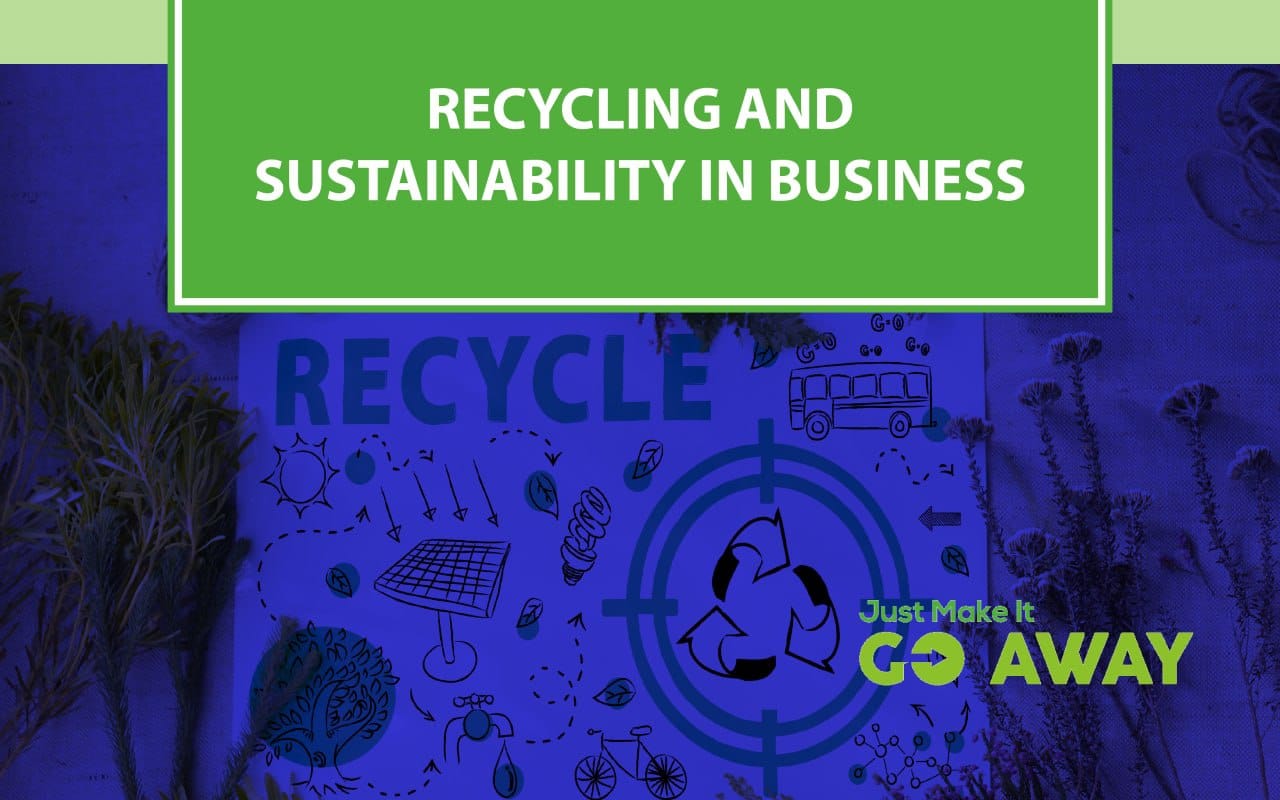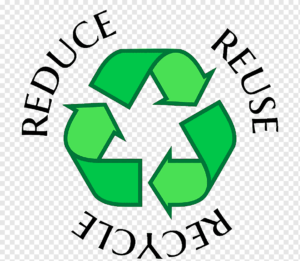We all know the saying: Reduce, Reuse, Recycle. Reduce your consumption, reuse what you can for as long as you can, and then recycle so your waste can have a new life. But what is recycling and sustainability and what does it have to do with business?
Recycling is the process of taking used or waste materials, processing them and breaking them down, and then turning them into new products. If you live in the U.S., your municipality most likely offers recycling as part of its waste collection program. Most people are familiar with the recognizable recycling logo above, as well as the numbers inside the triangle found on recyclable plastics, from their city or town recycling collection and sorting.
Just like municipalities, businesses can hire recycling collection agencies too, but recycling as a business can be very different. Businesses tend to invest in large inventories of items from machinery to desks, and overhauling, renovating, and upgrading come with their own specialty recycling challenges. But with these challenges come opportunities to save money, get rid of clutter, improve communities, and advance business sustainability initiatives.
How Recycling Works
You may have seen paper or plastic products and packaging claiming to be a certain percentage recycled; that percentage indicates how much of the product came from a different product that was then broken down into a base material and combined with the new base material. This process speaks to the circularity of recycling, as a recycled product will be reused for a similar purpose. Consumer materials like aluminum, plastic, paper, and glass are all common recyclable items, but they are all recycled and processed in different ways.
Another similar reuse method is called upcycling. Upcycling is the refashioning of materials – reusing them without breaking them down into raw materials. An example of upcycling is plastic pollution being woven into fabrics, whereas recycled plastic becomes plastic again.
Recycling and Sustainability
Recycling is directly linked to sustainability. Throwing waste materials in the trash means that they will most likely be tossed in a landfill or burned, releasing CO2 and potentially harmful chemicals into the air either way. The amount of waste generated by the average person has only grown with the proliferation of plastics and single-use items. Americans generated 2.68 pounds of garbage per day on average in 1960; this amount has grown to an average of 4.9 pounds per day by 2018.
By recycling, you can try to prevent all this waste from ending up in landfills, the ocean, or being incinerated. Not all items can be recycled; but by recycling what you can, you help contribute to a circular economy, an economic concept that holds that reuse and recycling are central to all stages of production. According to the standards of a circular economy, recycling helps manage raw materials, save money from harvesting, and reduce waste at product end-of-life. By recycling materials that would have ended up as waste, you are contributing to a more sustainable future by preserving natural resources, not creating unnecessary demand, and giving existing products a new life and alternative use. Learn more about the advantages and disadvantages of reverse logistics and why this process is important to your business sustainability.
But it’s also important to examine the sustainability of our recycling system itself. As you may know, many municipalities across the U.S. have stopped or limited recycling services due to a lack of infrastructure and high costs. Most of our recycling has always been sent to various countries across Asia. With new policies in place in those countries, we simply have too much overflow waste and not enough processing infrastructure. Items tossed in a recycling bin often end up in a landfill anyway for various reasons. Municipalities that used to be paid for recycling now have to pay to remove the waste. There is not a big enough market for recycling, and it is currently not economically sustainable on a large level. Additive manufacturing gives what would be waste, a new life.
Recycling and Manufacturing
Despite the issues with recycling nationwide, recycling at the business level can still be sustainable and profitable. This is because similar items such as desks, chairs, and office decor are larger items that are needed or recycled in bulk. Although getting rid of this large inventory may seem costly at first, there are ways to make and save money by recycling. There are companies that will pay for overstocked and damaged goods. Implementing a centralized recycling program, where employees dump their office waste in a central location, can help businesses save money and has been shown to reduce waste overall. Businesses also benefit from being able to use recycling as a selling point. Recycling can help businesses advance their sustainability initiatives and be used as a marketing tool.
Manufacturing companies in particular often have machinery that can be used for parts, or costly metals that are relatively easy to melt down and are therefore still profitable to recycle. Even the packaging of this equipment can be easier to recycle than smaller pieces of cardboard, plastic, and styrofoam. There are many companies out there with innovative sustainable solutions to our waste and pollution crisis. Businesses can save money and find a potential marketing opportunity by buying products made from recycled materials. How does your business, or businesses you support, implement recycling?


